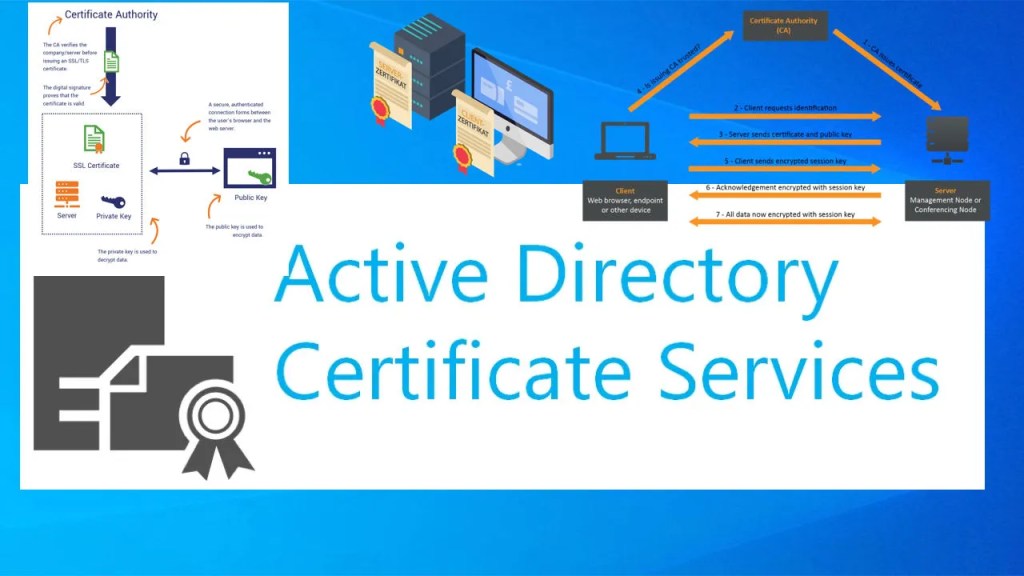🔄 Introduction
As Microsoft moves toward a modern servicing model, Exchange Server Subscription Edition (SE) is the next evolution in on-premises email infrastructure. Built on the foundation of Exchange Server 2019, this edition introduces a subscription-based license and an evergreen model—ideal for organizations seeking long-term security, compliance, and hybrid-readiness without disruptive version jumps.
If you’re currently running Exchange Server 2019 CU14 or later, the upgrade path to SE is straightforward and can be performed in-place, retaining your existing settings, certificates, and databases. However, a successful upgrade depends on careful pre-checks, including Active Directory schema readiness, OS compatibility, and Exchange CU validation.
In this article, I provide a detailed yet simplified guide to help Exchange admins, system engineers, and IT teams prepare, verify, and upgrade to Exchange Server SE with confidence.
Upgrading to Exchange Server Subscription Edition ensures continued support, security, and feature updates beyond traditional lifecycle limits. This in-place upgrade keeps existing data and configurations intact.
🚀 Upgrade Recommendations
| If You’re On… | Do This Next | Why This Matters |
|---|---|---|
| Exchange 2016 CU23 | ➤ Upgrade to 2019 CU15 → then SE RTM | 2016 is going out of support; SE only allows upgrade from 2019. |
| Exchange 2019 CU14/CU15 | ➤ In-place upgrade to SE RTM | Seamless transition; no schema change, low risk. |
| Exchange 2019 Earlier than CU14 | ➤ First update to CU15 → then SE | Only CU14 and CU15 allow direct in-place upgrade to SE. |
🧠 Important Notes
- Exchange SE RTM = Exchange 2019 CU16 (renamed) → No schema changes, same setup method.
- In-place upgrades are officially supported from CU14/CU15.
- Modern lifecycle: Exchange SE has no fixed end-of-support date—updates will keep it evergreen.
- CU2 blocks legacy coexistence—ensure full SE deployment before then.
🔍 Checklist Before You Upgrade
Upgrading your Exchange environment isn’t just about running the setup—it involves ensuring compatibility, readiness, and backups. Use this checklist to prepare:
✅ 1. Check Current Exchange Server Version
- Only Exchange Server 2019 CU14 or later is eligible for an in-place upgrade.
- Run the following command in Exchange Management Shell:
Get-ExchangeServer | Format-List Name,Edition,AdminDisplayVersion

✅ 2. Check Operating System Compatibility
- Required OS: Windows Server 2022 or Windows Server 2025
- Run: Get-CimInstance Win32_OperatingSystem | Select Caption, Version

📌 If you’re on Windows Server 2016 or 2019, you’ll need to upgrade the OS first.
Check the Microsoft Official Documentation for Support matrix.
✅ 3. Check Exchange Schema Version

🛠️ Upgrade Steps to Exchange Server SE
📁 Step 1: Download Exchange Server Subscription Edition
You can download the ISO file from the Microsoft Volume Licensing Service Center (VLSC) or Download Exchange Server Subscription Edition RTM (KB5047155) from Official Microsoft Download Center
💡 Ensure you have an active Software Assurance (SA) license.
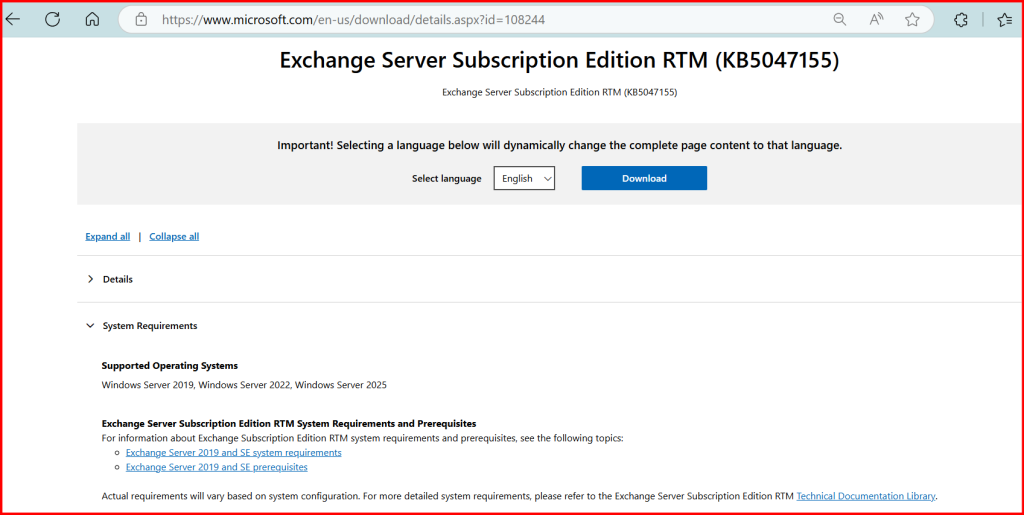
🧪 Step 2: Prepare Active Directory Schema
- Open a command prompt as Administrator from the ISO setup folder:
Setup.exe /PrepareSchema /IAcceptExchangeServerLicenseTerms_DiagnosticDataON
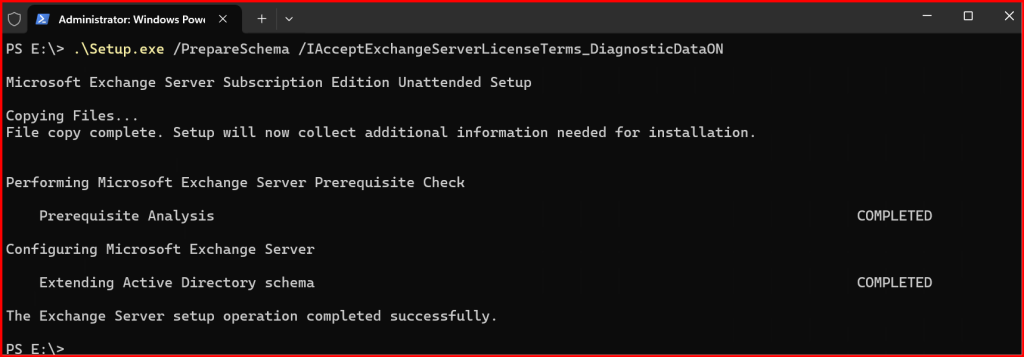
Setup.exe /PrepareAD /IAcceptExchangeServerLicenseTerms_DiagnosticDataON
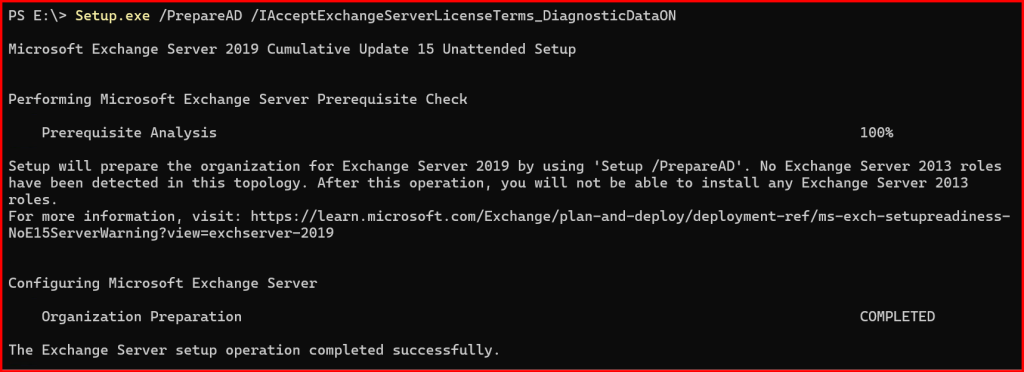
💻 Step 3: Perform the In-Place Upgrade
- Run the Exchange SE setup from command line with upgrade mode:
Setup.exe /Mode:Upgrade /IAcceptExchangeServerLicenseTerms_DiagnosticDataON

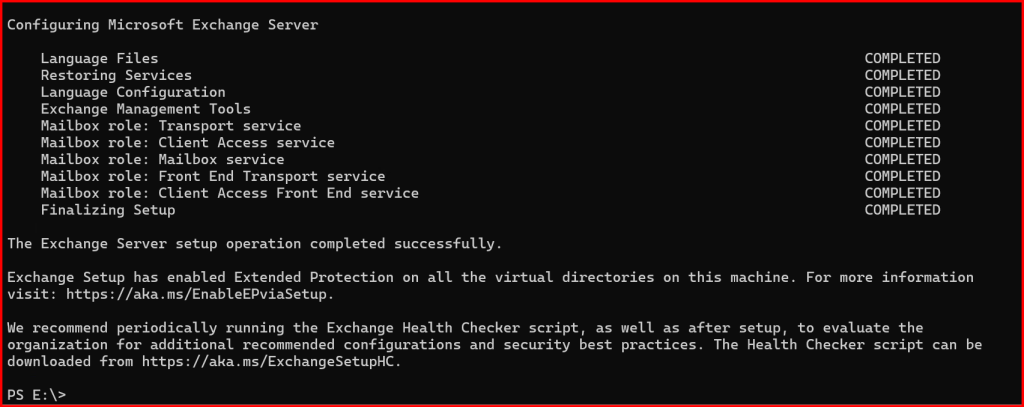
🔁 Step 4: Reboot and Validate
Once the setup completes:
- Restart the server
Validation:
- Open Exchange Management Shell (EMS) and check Service Health, MailFlow & Database Status.



2. Schema Version and Exchange Version: Note: NO Changes.

3. Open Exchange Admin Center (EAC): https://webmail.maharjan-binod.com.np/ecp
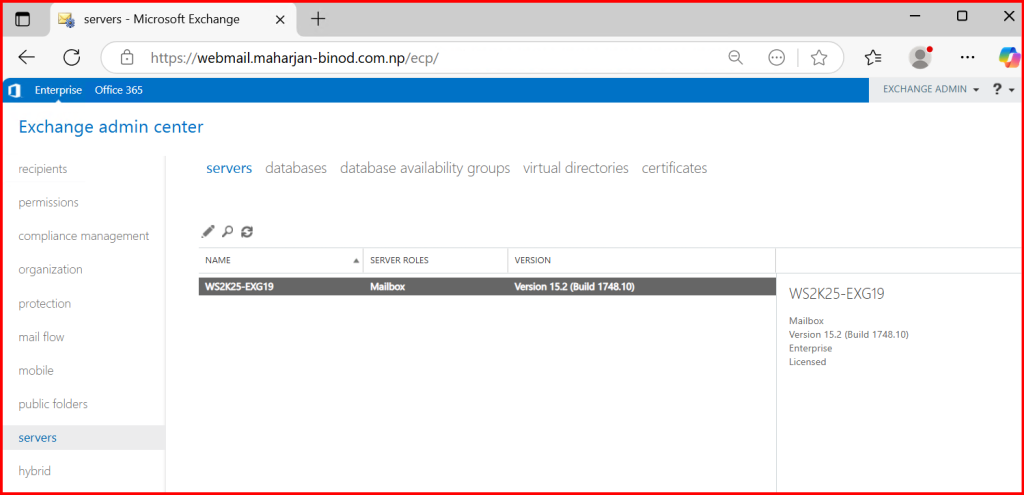
Exchange OWA/ECP both working Successfully.
🧾 Summary: Exchange SE Upgrade in Review
Upgrading to Exchange Server Subscription Edition marks a major step forward in keeping your on-premises email environment modern, secure, and aligned with Microsoft’s long-term roadmap. Here’s a quick recap of what we covered:
✅ Exchange SE is a subscription-based version that replaces traditional major releases (like 2022) with a continuously updated model.
✅ It’s built on Exchange 2019 CU14 or later, meaning in-place upgrades are smooth and non-disruptive.
✅ You must check your environment’s readiness by verifying:
- Exchange schema version (
objectVersion,rangeUpper) - Current Exchange CU build
- Supported OS
✅ The upgrade involves schema preparation, running setup in upgrade mode, and validating post-installation components.
While upgrading to Exchange Server Subscription Edition (SE), the experience was nearly identical to performing a regular Cumulative Update (CU) upgrade. I noticed no visible changes in the Exchange version, schema version, installation version, CU level, or license information—it still reflected Exchange Server 2019 CU15. Nowhere in the system did it explicitly mention “Exchange Subscription Edition (SE) RTM.” Overall, the process felt like a seamless continuation of existing Exchange evolution, just as described in Microsoft’s documentation.
🏁 Conclusion: Future-Proof Your Exchange Environment
Microsoft’s move to Subscription Edition signals a future where Exchange evolves continuously without full version replacements. By upgrading now, your organization gains:
- Enhanced security posture with regular updates
- Better hybrid compatibility with Microsoft 365
- A simplified servicing model that reduces future maintenance overhead
🚀 Take action now: Start by running readiness checks, verifying your schema, and planning a controlled upgrade window.
If you’re not ready to upgrade yet, at least begin preparing your infrastructure — update your Exchange version, review your AD health, and secure the required licensing under Software Assurance or CSP.
Reference:
Exchange Server Subscription Edition (SE) is now available | Microsoft Community Hub
Upgrading to Exchange Server Subscription Edition (SE) | Microsoft Learn

